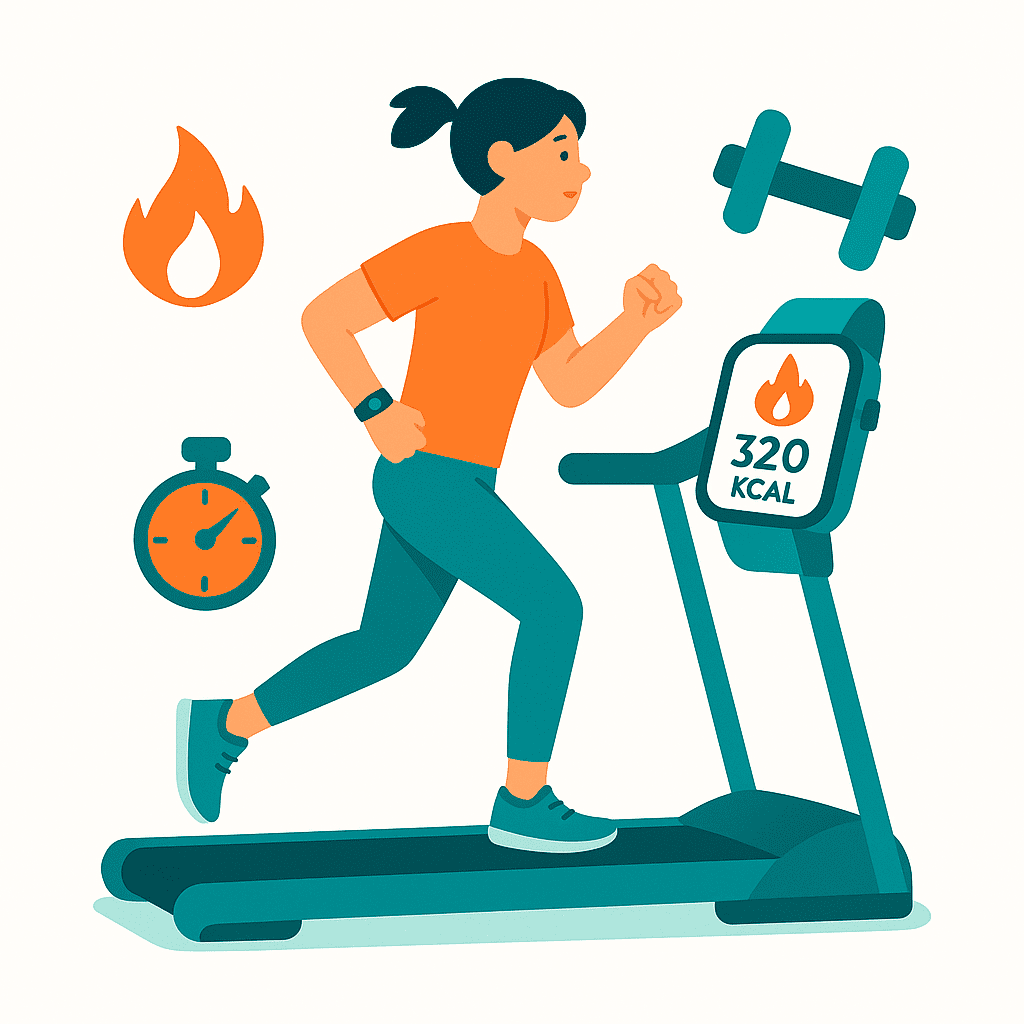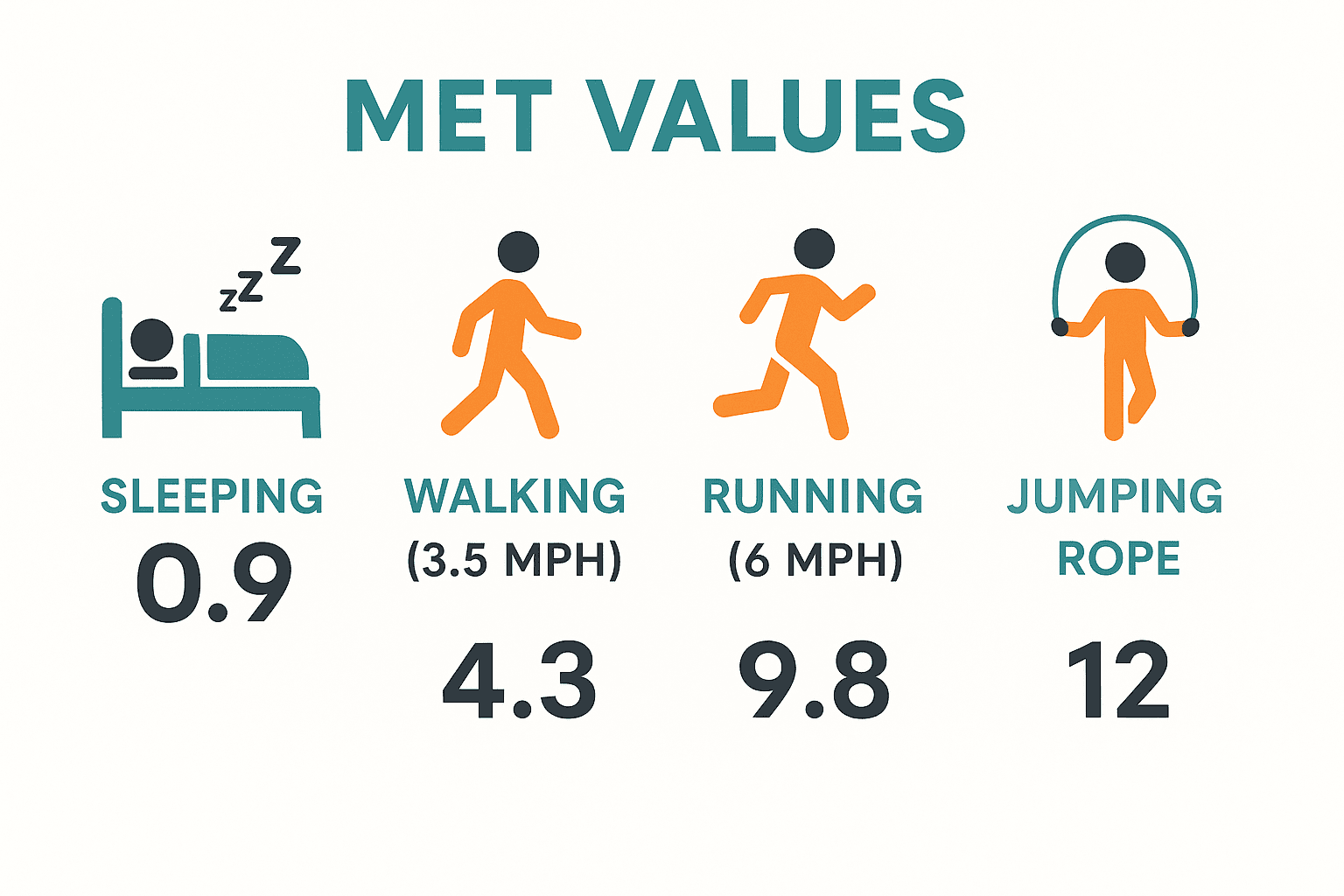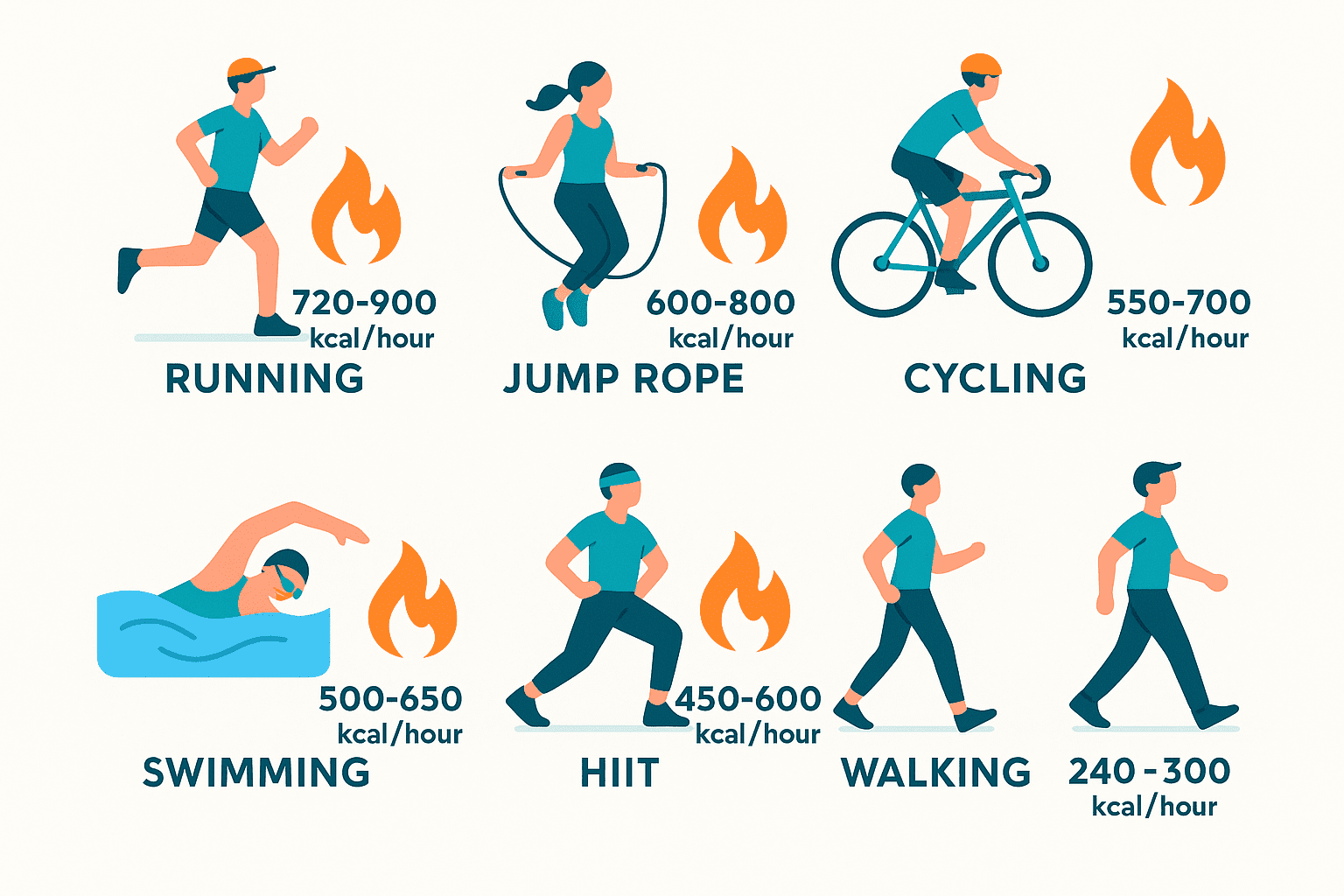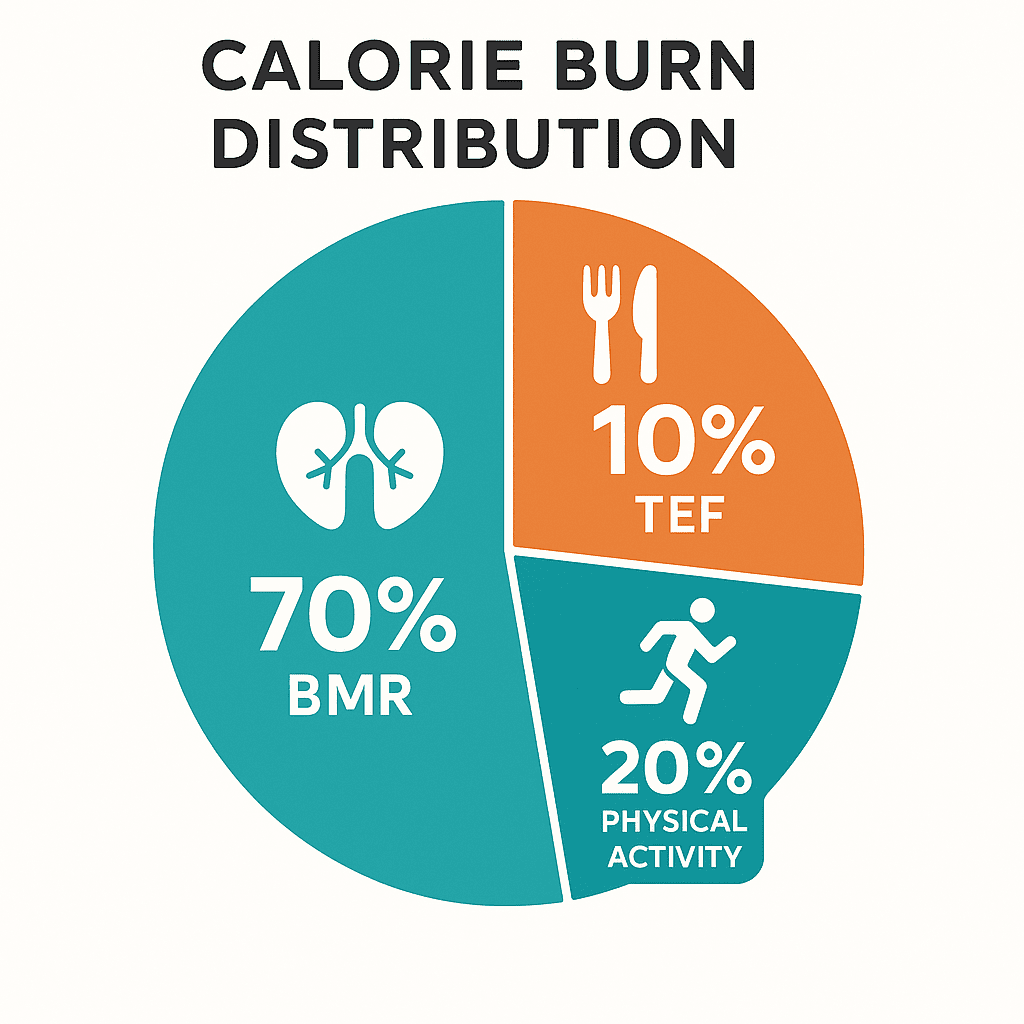NutriFitCalc — Calories Burned Calculator
Estimate calories burned for common activities using MET values. Switch between Metric and Imperial, add your details, and set activity duration.
Activity
Estimate calories burned for hundreds of activities using MET values, plan smarter workouts, and balance intake with accurate, personalized numbers.

Calories are the invisible currency of your body that power every heartbeat, breath, and movement. Every activity from walking the dog to gym training burns energy. Knowing how many calories you burn daily is essential for weight maintenance or change.
If you eat more than you burn, the excess stores as fat. If you burn more than you eat, your body uses stored fat for fuel.
Most people guess at daily expenditure or use rough averages that do not match real life. The NutriFitCalc Calories Burned Calculator estimates calories for your body and activity level using validated methods.
What Is a Calories Burned Calculator?
A calories burned calculator estimates energy expenditure for specific activities. It uses validated MET values to produce precise results rather than random averages.
- Enter your body weight.
- Select activity such as walking, cycling, or swimming.
- Enter exercise duration.
The calculator then shows calories burned instantly. Use it to plan workouts, balance intake with output, and compare which activities deliver better results in less time.
Example: about 30 minutes of brisk walking can burn roughly 150 kcal while the same duration of jump rope can burn about 400 kcal. Use this insight to pick efficient sessions and accelerate progress.
Calculate your calories burned now.

How It Works — Understanding MET Values
MET is a unit that represents how much energy an activity uses compared with resting.
- 1 MET equals energy used at rest while sitting.
- 5 MET equals five times resting energy use.
Typical MET examples:
- Sleeping equals 0.9 MET
- Walking at about 3.5 mph equals 4.3 MET
- Running at about 6 mph equals 9.8 MET
- Jump rope equals about 12 MET
Formula: Calories burned = MET × 3.5 × weight in kilograms ÷ 200 × duration in minutes
NutriFitCalc applies this formula with activity data from trusted sources such as Harvard Health, CDC, and the American College of Sports Medicine to support accuracy.

Manual Calculation Example
Scenario: 70 kg male walking at 4.3 MET for 30 minutes.
Calories burned = 4.3 × 3.5 × 70 ÷ 200 × 30 ≈ 158 kcal
The same person running at a higher MET value can burn roughly 360 kcal in the same time. The NutriFitCalc calculator automates this for hundreds of activities including cycling, yoga, treadmill work, and household chores.
Factors That Affect Calorie Burn
- Body weight and composition: more mass and more muscle generally increase burn.
- Intensity: higher intensity demands more energy.
- Duration: longer sessions burn more total calories though efficiency can rise with training.
- Age and sex: younger individuals and men often have higher burn due to lean mass and hormones.
- Fitness level: beginners may burn more initially while trained athletes become efficient.
- Environment: temperature and altitude can change energy needs.
NutriFitCalc accounts for these factors to provide realistic estimates.
Average Calories Burned by Common Activities
| Activity | MET | Calories in 30 min for 70 kg |
|---|---|---|
| Walking 3.5 mph | 4.3 | ≈ 158 kcal |
| Running 6 mph | 9.8 | ≈ 360 kcal |
| Cycling 12 mph | 8.0 | ≈ 294 kcal |
| Swimming freestyle | 6.0 | ≈ 220 kcal |
| Weight training | 5.0 | ≈ 185 kcal |
| Jump rope | 12.0 | ≈ 440 kcal |
| Yoga classic | 2.5 | ≈ 90 kcal |
| Hiking uphill | 7.0 | ≈ 260 kcal |
| House cleaning | 3.0 | ≈ 110 kcal |
Even housework contributes to daily burn. This is part of non exercise activity thermogenesis.
Why Track Calories Burned
- Weight management: balance intake with output for loss, gain, or maintenance.
- Clear goals: know how many calories offset meals.
- Motivation: visible numbers support consistency.
- Progress insight: see how training changes expenditure over time.
For best results, align daily intake with expenditure using the Calories Burned Calculator and the Calories Calculator.
Top Exercises for Higher Burn

| Exercise | Estimated kcal per hour for 70 kg | Typical intensity |
|---|---|---|
| Running 8 mph | ≈ 720 to 900 | High |
| Jump rope | ≈ 600 to 800 | High |
| Cycling vigorous | ≈ 550 to 700 | Moderate to high |
| Swimming | ≈ 500 to 650 | Moderate to high |
| HIIT | ≈ 450 to 600 | High |
| Rowing machine | ≈ 400 to 550 | Moderate |
| Fast walking 5 km per hour | ≈ 240 to 300 | Light to moderate |
Combine cardio with resistance training to support fat loss and muscle gain.
NutriFitCalc Tools for Total Health Tracking
- BMI Calculator for quick weight category screening
- BMR Calculator to estimate resting needs
- Calories Calculator for daily targets
- Body Fat Calculator to track composition
- Ideal Weight Calculator for healthy ranges
Use these together as a personal dashboard for intake, expenditure, and progress.
How to Burn More Calories Each Day
- Increase EPOC with intervals and HIIT. Alternate short intense efforts with recovery.
- Build muscle with resistance training. Lean tissue burns more calories at rest than fat.
- Move often. Stand, stretch, and take short walks through the day.
- Eat smart. Protein rich meals support thermogenesis and satiety.
- Stay hydrated. Dehydration can reduce performance.
- Sleep 7 to 8 hours. Poor sleep disrupts appetite hormones.
- Be consistent. Small daily habits create measurable change over time.
Common Myths About Burning Calories
- Myth: Only cardio burns fat. Reality: strength training elevates metabolism and supports after burn.
- Myth: More sweat equals more burn. Reality: sweat regulates temperature not calories.
- Myth: Longer is always better. Reality: short focused sessions can outperform long low effort work.
- Myth: Spot reduction is possible. Reality: fat loss occurs systemically.
- Myth: Skipping meals speeds loss. Reality: it slows metabolism and promotes later overeating.
FAQs
How many calories do I burn without exercise?
Your Basal Metabolic Rate is what you burn at rest. Use the BMR Calculator to estimate your baseline.
How can I track calories I burn?
Use the NutriFitCalc Calories Burned Calculator for realistic estimates by activity and duration.
How many calories equal one kilogram of body fat?
About 7,700 kcal per kilogram. A deficit of around 500 kcal per day can support steady fat loss.
Which workouts burn the most calories?
Typically running, jump rope, vigorous cycling, swimming, and HIIT. Higher intensity generally burns more.
Do I need to track daily?
Not required, but tracking improves awareness and discipline. Pair with the Calories Calculator to match intake with output.
Conclusion

The calories burned calculator is more than a tool. It is a digital accountability partner. Understanding your expenditure gives you control over workouts, nutrition, and progress.
- Identify efficient exercises
- Align your nutrition plan with output
- Track improvements with confidence
Use the Calories Burned Calculator to convert effort into measurable results.